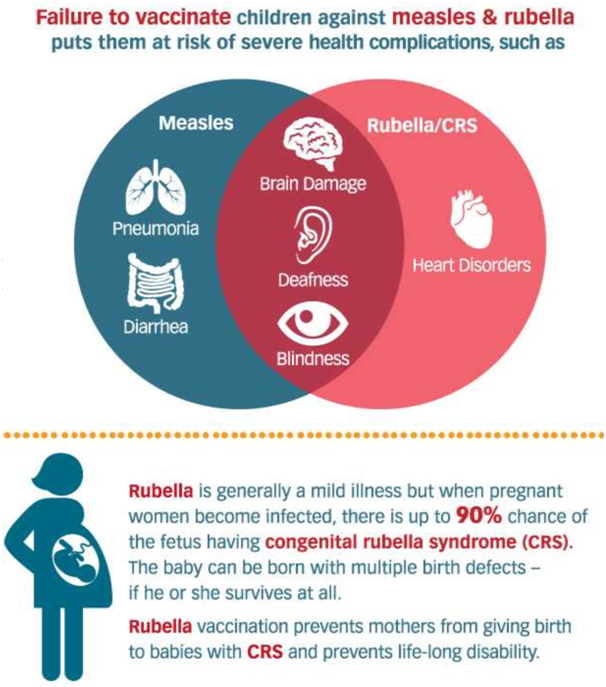Eliminating Measles and Rubella by 2023
Context: India had set a target to eliminate measles and rubella (MR) by 2023, having missed the earlier deadline of 2020, due to a variety of reasons, exacerbated by disruptions due to the pandemic.
Measles and Rubella
- Measles is a disease caused by a virus in the paramyxovirus family and it is usually passed through direct contact and through the air.
- The virus infects the respiratory tract, then spreads all over the body.
- Measles is a human disease and is not known to occur in animals.
- Rubella is an acute, contagious viral infection. Rubella virus infection usually causes a mild fever and rash in children and adults.
- Infection during pregnancy, particularly during the first trimester, can result in miscarriage, foetal death, stillbirth, or infants with congenital malformations, known as congenital rubella syndrome (CRS).
- The rubella virus is transmitted by airborne droplets when infected people sneeze or cough. Humans are the only known host.
- According to the World Health Organization (WHO) measles virus is one of the world’s most contagious human viruses that kills more than 1,00,000 children every year globally, and rubella is a leading vaccine-preventable cause of birth defects.
- Both rubella and measles can be prevented by just two doses of a safe and effective vaccine.
India’s Efforts to achieve targets
- During 2010–2013, India conducted a phased measles catch-up immunisation for children aged 9 months–10 years in 14 States, vaccinating approximately 119 million children.
- Mission Indradhanush was launched in 2014 to ramp up vaccinating the unvaccinated population.
- During 2017–2021, India adopted a national strategic plan for measles and rubella elimination, and introduced rubella-containing vaccine (RCV) into the routine immunisation programme.
- It also launched a nationwide measles-rubella supplementary immunisation activity (SIA) catch-up campaign.
- The country transitioned from outbreak-based surveillance to case-based acute fever and rash surveillance, and more than doubled the number of laboratories in the measles-rubella network.
Is the target to eliminate MR achievable?
- The main concern is the under one-year population. If the country keeps up the tempo of immunisation at 95 % of the second dose coverage it will be possible to achieve the 2023 target.
What needs to be done to achieve the goal?
- Give each district a target to achieve the required rate of immunisation, conduct a robust fever and rash surveillance programme, besides testing for MR.
- It is important to provide full support to the ground level staff who implement the programme — the village health nurses, ASHA (accredited social health activists) workers, anganwadi and ICDS (Integrated Child Development Services) workers.
- The only way to ensure a target driven approach is successful is to make sure that the people given the tasks are happy doing their job. There is a need to improve their service conditions, and make sure salaries are not pending for months.
The WHO has shown hope that India could indeed reach the target. The country can reach MR elimination goals in India if we strengthen surveillance by finding, investigating, and collecting and testing a sample for every suspected case, in each district in every State and UT.
| Practice Question
1. What is Mission Indradhanush? Has it managed to achieve its targeted goals? |





